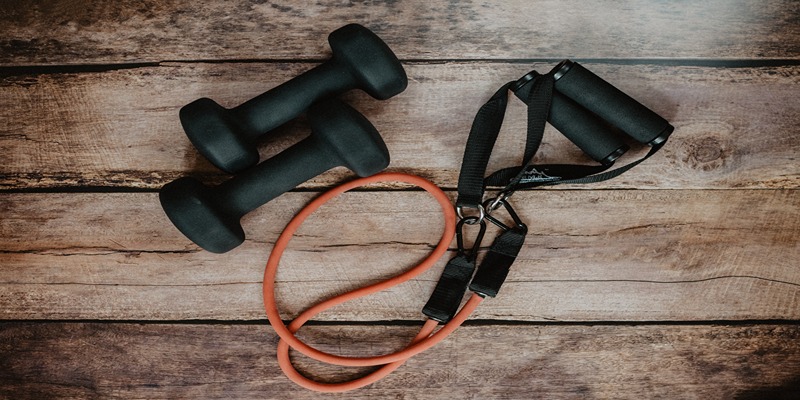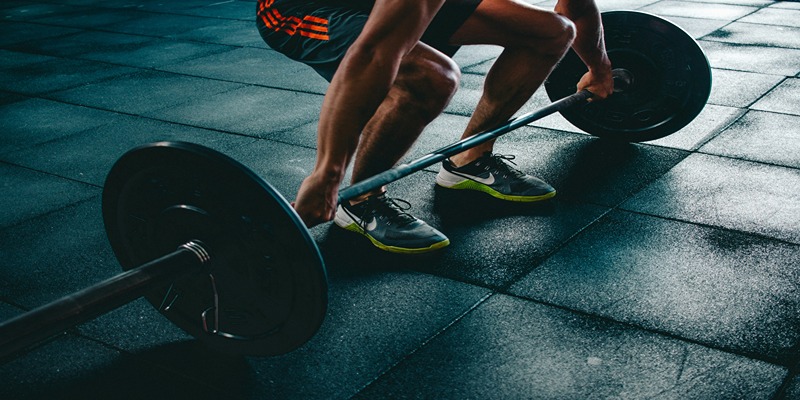Fitness professionals have greatly embraced High-Intensity Interval Training (HIIT) on account of its extraordinary influence on general health. A precise and succinct elucidation and definition of the high-intensity interval training (HIIT) methodology are presented in this article. HIIT is a training method characterised by shortened intervals of respite followed by brief periods of extremely intensive physical activity. There is a prevalent notion that High-Intensity Interval Training (HIIT) is the most efficacious approach to expend calories, enhance physical fitness, and develop muscle mass. As we delve deeper into this article, we will explore the various aspects of HIIT, including its benefits, workout routines, and how to incorporate it into your fitness journey. Get ready to discover the transformative power of HIIT for your health and fitness goals.

HIIT Workout Benefits
Accelerating Weight Loss and Fat Burning
It raises metabolic rate and heart rate with brief, intense workouts. Because of this, you will burn more calories during and after your exercise. Compared to more conventional steady-state cardio, HIIT is more effective in lowering body fat percentage, according to the research. One effective strategy for losing weight and fat is to include high-intensity interval training (HIIT) in your regular exercise program.
Enhancing Cardiovascular Health
Cardiovascular health is one area where HIIT has gained a lot of attention. Improve your cardiovascular endurance and fitness with these high-intensity intervals that will have your heart racing. Increased cardiovascular fitness, decreased resting heart rate, and better blood pressure are all possible outcomes of high-intensity interval training (HIIT). These advantages reduce the likelihood of heart disease and help maintain a healthy heart. If you want to improve your cardiovascular health and get a number of fitness benefits without wasting too much time, HIIT is the way to go.
HIIT Workout Benefits
Boosting Metabolism and Energy Levels
The capacity to increase energy and metabolism is one of the most striking advantages. High-intensity interval training (HIIT) increases metabolic rate by raising heart rate and activating several muscle groups. This increased metabolic rate stays with you even after you stop exercising, so you may keep burning calories all day long. In addition to releasing endorphins, which fight weariness and give you a natural energy boost, HIIT also helps with weight loss. You can boost your metabolism and get more out of your workouts by including HIIT in your regimen.
Improving Muscle Tone and Strength
Your muscles will be challenged and get stronger as a result of the high-intensity interval training. By utilizing resistance training or simply bodyweight exercises, HIIT promotes the growth of lean muscle mass, which in turn enhances the definition and tone of your muscles. Strength training as a whole benefits from HIIT because of the wide range of motions used, which work multiple muscle groups. Incorporating HIIT into your training routine is a smart move since it improves muscular tone and strength simultaneously.
HIIT Routine Examples for Different Fitness Levels
Beginner-Friendly HIIT Workouts
If you're new to HIIT, it's important to start with exercises that are simpler and easier for beginners. Designed with beginners in mind, these routines often have easier exercises and shorter training periods. Jumping jacks, bodyweight squats, and modified push-ups are some of the exercises that may make up an easy beginner's high-intensity interval training program. There is more time to adjust to the intensity since the labor intervals are shorter. Those just starting out with HIIT may ease into longer and more intense workouts as their fitness levels rise.

Intermediate HIIT Challenges
While still maintaining an adequate level of intensity, intermediate high-intensity interval training activities provide more challenging challenges. Exercise intricacy, the length of work intervals, and the duration of rest intervals are all characteristics that are characteristic of various sorts of workouts. High knees, burpees, and mountain climbers are some of the workouts that are included in the routine exercises. Increase your stamina and push yourself to new heights with the help of intermediate high-intensity interval training. The importance of concentrating on proper form and development cannot be overstated when it comes to preventing overexertion.
Advanced HIIT Routines for Peak Performance
People who already have a high degree of fitness and want to push themselves to their limits would benefit most from advanced HIIT programs. Workouts that require explosiveness, agility, and strength are defined by shorter rest times and longer work intervals. In advanced HIIT, you'll see a lot of box jumps, kettlebell swings, and sprints. The objective is to test your heart rate and muscle endurance to their limits. Advanced exercises need prior knowledge of HIIT as well as a solid fitness base. While attempting more difficult HIIT routines, be sure to always put safety and correct form first.
Nutrition and Recovery in HIIT Training
When it comes to helping high-intensity interval trainers (HIIT) achieve their fitness goals, proper diet is crucial. A well-rounded diet abundant in carbs, protein, and healthy fats is crucial for fueling high-intensity activities. Carbs provide a quick source of energy, while protein helps in building and repairing muscles. For peak performance, it's also important to drink enough water. Before a high-intensity interval training (HIIT) session, HIIT participants should have a carbohydrate and protein-rich snack or meal. After the exercise, they should consume a healthy meal or shake to replenish their energy. If you want to get the most out of your high-intensity interval training (HIIT) sessions and speed up your recovery time, proper diet is key.
Conclusion
This type of training is appropriate for people of all fitness levels, including novices seeking a gradual introduction to exercise, intermediates seeking more difficult regimens, and even experienced athletes seeking to push their physical limits. To obtain the most beneficial results from your HIIT workouts, you must consume an adequate number of calories prior to each session and allow sufficient time for recuperation afterward. Commencing a personalized HIIT programme, in conjunction with effective dietary and recovery strategies, could potentially initiate a paradigm shift in one's physical fitness.




